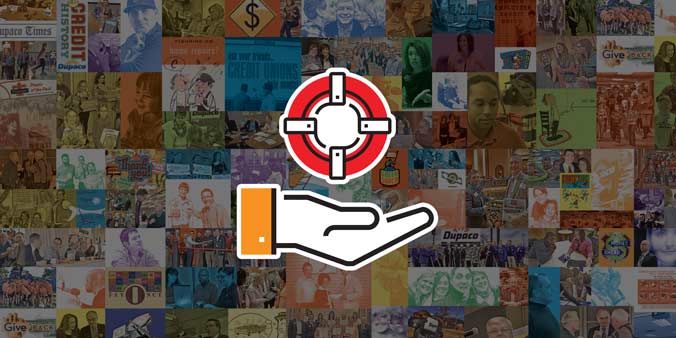
The inflation struggle is real: Here’s what you can do about it
Updated Nov. 2, 2022, at 8:50 a.m. CT
From groceries to gas, we’re feeling inflation’s impact.
Price hikes like this haven’t been seen in four decades, according to the most recent report by the U.S. Bureau of Labor Statistics.
Inflation affects more than today’s painful prices. It makes it difficult to anticipate how much we need to save for our future goals as the dollar’s purchasing power decreases.
The good news? You can take steps to manage these rising costs and keep planning for your future.
Review your budget
Unfortunately, as a consumer, there’s not much you can do to bring down the costs of common goods.
But you can be realistic about what you need to spend money on—and what you don’t.
Your previous budget might no longer work. Are there discretionary expenses you can trim for now?
“You want to make sure the things you are paying for bring you joy. But you have to be practical about what you can truly afford too,” said Dupaco Community Credit Union’s Erin Engler.
Download our free budget worksheet >
Here are some questions you can ask yourself to uncover ways to spend less:
- Do you pay for cable or satellite services?
- How many streaming services do you subscribe to? Consider cutting back to just one and rotating it based on the best deal you find.
- Can you find a less expensive phone plan?
- Are you eating carryout instead of making meals at home?
- Are you using paper plates instead of dishes?
- How often do you use all of your memberships?
- Can you refinance or consolidate your existing debt to make your payments more manageable?
“Whenever you look at your budget, it’s give and take,” Engler said. “When you sacrifice, look for free opportunities.”
You don’t have to do this alone! A free Dupaco Money Makeover can help you review your entire financial picture—and create a personalized plan to help you take control where you can.
Request a free Dupaco Money Makeover >
Next, incorporate other cost-saving techniques you might not have needed before:
- Use coupons whenever you can.
- Shop the seasons and sales.
- Buy items you always use in bulk.
- Try generic brands.
- Cut back on unnecessary pricey grocery items.
- Save on gas costs by walking or biking to work and other destinations, carpooling and using public transportation when possible.
Explore bringing in more money
If the money coming in isn’t enough to cover the money that must go out, explore whether you can boost your income:
- When’s the last time you asked your supervisor for a raise at work?
- Can you pick up more shifts?
- Can you pick up a second job?
- What higher-paying positions can you apply for at your company or another one?
Pull from savings first
In the meantime, if you’re having trouble covering your expenses, look to your emergency savings first.
That’s what it’s there for.
Pull from the money you’ve set aside in liquid savings accounts.
This way, you aren’t penalized for withdrawing funds from other important accounts, like retirement savings accounts, Engler said.
Consider borrowing
If your savings isn’t enough, you might need to borrow money.
Borrowing isn’t one-size-fits-all, though.
Talk to your credit union to learn what works best for you.
“At Dupaco, we’re here to help you,” Engler said. “We have options, so if you feel like you’re struggling, or you’re worried that you might, call us so we can talk about how we can help.”
Communicate with your providers
If high prices are hitting you especially hard, the reality is that you might not be able to pay all of your bills right now.
Focus first on your needs: Food and shelter.
If you must, delay repaying credit cards and other debts until you’re in a more stable financial position.
For the bills you can’t pay, communication is key.
Reach out to your creditors and service providers. Ask whether you qualify for a:
- Reduced interest rate
- Different payment plan
- Other financial relief
Start with a free Dupaco Money Makeover >
Review your savings and investments
Maybe you’re automatically setting aside money in a savings account, but your budget is tighter now.
You could temporarily reduce the amount you’re setting aside each time.
If you adjust your savings, set a reminder to reevaluate your budget in a few months. You’ll want to determine whether you can resume your previous money strategies.
If you can continue to save, look for ways to boost your savings, erring on the generous side. (It’s almost certain that the same things will cost more in the future than they do today.)
Can you consolidate your savings into an account with a higher-rate return?
This is also a good time to review your investments to help increase the rate of return on your savings. The goal? Find a rate of return higher than the corresponding inflation rate (and the taxes you’ll owe on that investment income) over that same period.
Take this time to ensure your portfolio is properly balanced for the changing market conditions. Speaking to a financial adviser will help ensure your investments are where they need to be to grow at a healthy rate.


